
Hockey is an amazing sport...and once you understand what is happening on the ice, it makes it a lot easier! We recognize that for some of our players and parents, hockey is not ingrained in their family activities and starting a new sport can be daunting - often times more for the family members who aren't benefiting from having a coach explaining everything.
This page will provide some of the best resources developed around the hockey world to explain the game. While your little player is just starting down the pathway, and some of these resources use examples from international or NHL play which is a little bit more advanced than you will see on the ice, we wanted to give you the full picture of the game.
You've signed your child up for Vancouver Thunderbirds Minor Hockey but have never seen a hockey game, you're in the right place. Learn more below.
 Hockey Canada 101 - Hockey Canada is the overarching organization for minor hockey in Canada. They created this introduction for new parents to hockey back in 2008, since then, there have been a few changes. For example, back then each age division had its own name (Initiation, Novice, Atom, etc.) now they go by U6 (Under-6), U7 (Under-7) and so on. Other things to be aware of, for the U6 age group, there are no official games, instead it is practices and skills sessions. For U7 to U9, players play cross-ice (U7) or half-ice (U8 and U9) so some rules such as icing and offsides are not applicable. This is still a great resource to understand a little more about the game of ice hockey.
Hockey Canada 101 - Hockey Canada is the overarching organization for minor hockey in Canada. They created this introduction for new parents to hockey back in 2008, since then, there have been a few changes. For example, back then each age division had its own name (Initiation, Novice, Atom, etc.) now they go by U6 (Under-6), U7 (Under-7) and so on. Other things to be aware of, for the U6 age group, there are no official games, instead it is practices and skills sessions. For U7 to U9, players play cross-ice (U7) or half-ice (U8 and U9) so some rules such as icing and offsides are not applicable. This is still a great resource to understand a little more about the game of ice hockey.

IIHF - This short video, produced by the IIHF (International Ice Hockey Federation) explains the basics of how hockey is played. The IIHF is the parent organization for international ice hockey in the world.
TBirds is only possible with the many hands that volunteer. As you were made aware when registering, TBirds have a Volunteer Program in place. At the start of the season, there is a $150 deposit per child (max $300 per family) that would be returned at the END of the season if you complete our Volunteer Hat Trick. To complete the Hat Trick parents must assume one role within each player's team and complete a minimum of three association volunteer hours. Volunteer opportunities are posted on the Volunteer Portal by the association.
Learn more about the Volunteer Hat Trick program and Volunteer Positions HERE.
Your child is excited for the start of their first Vancouver Thunderbirds season, how can you make it the best start possible?
First, ensure you have bought all of the required equipment! See below on equipment details and where to purchase (such as our partners at Cyclone Taylor Sports). Also ensure their equipment is ready to go, including taping their stick and sharpening their skates.
Next, if there is still space, sign your child up for Summer Camps to prepare them for the season. Whether this is their first season in ice hockey or they have played a number of years, Summer Camps are designed to prepare players for September. Sign them up HERE.
Once the season is nearing, ensure you sign up for volunteer opportunities, see the section above for details.
Vancouver Thunderbirds catchment is located in the west side of Vancouver. Our home ice rinks include:
Hillcrest Rink - 4575 Clancy Loranger Way, Vancouver, BC V5Y 2M4, Canada
Kerrisdale Cyclone Taylor Arena - 5670 East Boulevard, Vancouver, BC V6M 3V2, Canada
Killarney Rink - 6260 Killarney St, Vancouver, BC V5S 2X7, Canada
Kitsilano Rink - 2690 Larch St, Vancouver, BC V6K 4K9, Canada
Richmond Olympic Oval - 6111 River Rd, Richmond, BC V7C 0A2, Canada
Sunset Arena - 390 E 51st Ave, Vancouver, BC V5X 1C5, Canada
Trout Lake Rink - 3360 Victoria Drive, Vancouver, V5N 4M4, Canada
UBC Doug Mitchell Thunderbird Sports Centre (Father David Bauer Arena, Protrans Arena, Thunderbird Arena) - 6066 Thunderbird Blvd, Vancouver, BC V6T 1Z3, Canada
Vancouver Thunderbirds consists of youth aged 5-20 You're never too late to begin your hockey journey, with all ages and skill levels available. The following is an outline of what to expect along the way.
U6 Division: Players in the U6 division are under the age of 6 at the start of the year. For example, in the 2023-24 season, children born in 2018 will be in U6. In U6, players are introduced to hockey through two practices a week. At the start of the season players will be assessed and organized by skill level allowing them to receive teaching at the level that is best suited for them. There are no formal games at this age, it is an introduction to ice hockey. Focus is put on skill and skating.
U7 Division: Players in the U7 division are under the age of 7 at the start of the year. In the 2023-24 season, children born in 2017 will be in U7. In U7, players are introduced to cross-ice games. As an ice rink is very big, instead of playing on the full ice, they will play in each end zone across the ice, this will allow for more skill to be introduced. To learn more about the benefits of cross-ice hockey, visit BC Hockey. The U7 division will also include practices. At this age, coaches for the teams will be parents that have been vetted by the organization.
U8 & U9 Division: U8, children born in 2016 in 2023-24 and U9, children born in 2015 will progress to play half-ice games. They will have 2-3 ice times each week with 2 practices/skill sessions and will rotate through home game time slots.
U11-U18 Divisions: From U11 to U18, players are given the opportunity to try out for Rep hockey. This is a level above Recreational, with further travel and paid coaches. Recreational hockey for U11 to U18 will continue to be coached by parents while rep teams may have parent coaches or a paid professional coach. In U11 players will have the opportunity to play full ice.
U21 Division: Since the 2021-22 season we have offered recreational U21 hockey for those graduated from high school but younger than 21 at the start of the season. They usually only have one game per week and no practices.
Vancouver Thunderbirds Minor Hockey Association is part of a much wider network of ice hockey associations in Canada. The flow of minor hockey associations is the following:
Vancouver Thunderbirds --> Pacific Coast Amateur Hockey Association (PCAHA) --> BC Hockey --> Hockey Canada
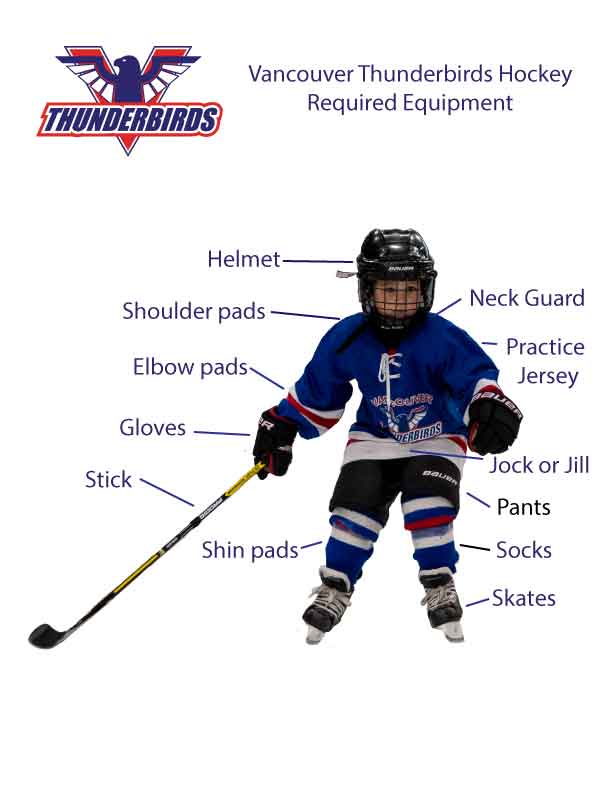
Hockey can be an expensive sport depending on how and where you purchase equipment. Certain equipment should be bought new, while it's less essential for other equipment. TBirds recommends purchasing new equipment from our partner Cyclone Taylor Sports (6575 Oak St, Vancouver), while used equipment can be found on our Facebook Marketplace and at quality used equipment stores like Cheapskates.
Cyclone Taylor Sports is an official sponsor of Vancouver Thunderbirds, be sure inform them you are with TBirds for a 10% discount on most regularly priced items.
Save and print this Equipment Checklist to ensure your children have all of the required equipment. Take this with you and check them off when complete. When shopping at Cyclone Taylor Sports, make sure you tell them that you're with Vancouver Thunderbirds to receive a 10% discount. Download the Thunderbirds Equipment Checklist.
Your main tool in hockey, your stick is used to pass the puck around the ice, deke and shoot it into the net. It is important that your child’s stick is the correct length. The stick should reach your child’s chin when they are wearing skates, or approximately their nose when without skates. Other aspects of hockey sticks that are important are whether you shoot left or right, this will depend on the player’s comfortability; there is no correlation to whether you are right-handed or left-handed.

Sticks should also be taped both on the blade and on the shaft (the top). Taping your stick will help keep the blade from damage, soften the blade to make it easier to accept passes and allow for better grip of the hockey stick. There is no set way to tape your stick, experiment and find what works for you.
Below are some examples of taped sticks. Be sure to wax the tape on your blade to ensure a smooth finish.
How to tape your hockey stick.
Vancouver Thunderbirds will provide your child with game jerseys for their season. For U11 and older, they will also have team practice jerseys. For U6 to U9, players will need to have a practice jersey to start the season until they are placed in their Timbits skill group where they will be provided with a jersey.
The jersey should be big enough to cover all of the players equipment but not too big that it hinders their play. Ensure you wash your child's jersey to keep it clean and fresh.
 Wearing a helmet is mandatory for every player, no matter the age and level of hockey. For youth players, helmets also require either a full metal cage or plastic visor. Referees will also be checking that each player’s chin strap is attached. Make sure your helmet is not too loose so that your head has room to move around, but is snug, not too tight either. Keeping your helmet clean is important for both the player’s health and the sanity of parents and teammates. Helmets are bound to get sweaty, ensure you leave your helmet out to dry after every practice.
Wearing a helmet is mandatory for every player, no matter the age and level of hockey. For youth players, helmets also require either a full metal cage or plastic visor. Referees will also be checking that each player’s chin strap is attached. Make sure your helmet is not too loose so that your head has room to move around, but is snug, not too tight either. Keeping your helmet clean is important for both the player’s health and the sanity of parents and teammates. Helmets are bound to get sweaty, ensure you leave your helmet out to dry after every practice.
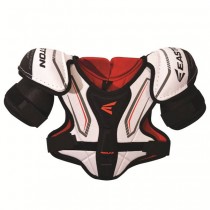 Shoulder pads are designed to protect your collarbone, upper chest, back, upper arms and shoulders. Sizing will be based on the circumference of your chest below the armpits. Check the product description for the size based on the chest measurement. Make sure the shoulder pads you are purchasing have a fiber cap as it is extremely important in preventing shoulder separations and should extend to the tip of the shoulder. To keep your shoulder pads clean, air them out after every game and practice.
Shoulder pads are designed to protect your collarbone, upper chest, back, upper arms and shoulders. Sizing will be based on the circumference of your chest below the armpits. Check the product description for the size based on the chest measurement. Make sure the shoulder pads you are purchasing have a fiber cap as it is extremely important in preventing shoulder separations and should extend to the tip of the shoulder. To keep your shoulder pads clean, air them out after every game and practice.
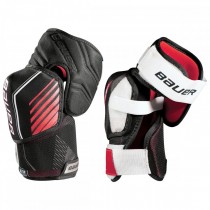 Elbow pads are important pieces of equipment for both newer and more experienced hockey players. As one learns to skate, one tends to fall, and elbows often take the brunt. Properly fitted elbow pads should not only fit over the elbow but also meet the edge of other equipment to not leave a gap for a puck or stick to injure them. It is also important that elbow pad is not too big to slide up and down the arm. Mobility is important when sizing your elbow pad, giving you flexibility when passing or taking shots. Make sure to air out your elbow pads after every game and practice.
Elbow pads are important pieces of equipment for both newer and more experienced hockey players. As one learns to skate, one tends to fall, and elbows often take the brunt. Properly fitted elbow pads should not only fit over the elbow but also meet the edge of other equipment to not leave a gap for a puck or stick to injure them. It is also important that elbow pad is not too big to slide up and down the arm. Mobility is important when sizing your elbow pad, giving you flexibility when passing or taking shots. Make sure to air out your elbow pads after every game and practice.
Hockey g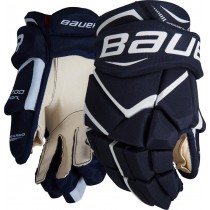 loves are needed to protect your silky hands so that you can make some slick plays. Hockey gloves protect your hands from the end of your fingers to your wrist. To buy the right size, measure from the end of your longest finger to the edge of your elbow pads, they should reach the elbow pad but not overlap.
loves are needed to protect your silky hands so that you can make some slick plays. Hockey gloves protect your hands from the end of your fingers to your wrist. To buy the right size, measure from the end of your longest finger to the edge of your elbow pads, they should reach the elbow pad but not overlap.
You will soon know the classic hockey smell; your gloves will play a large part in that. Ensure your gloves are cleaned and aired out to dry after using them. When needed, wash them in the washing machine.
Hockey p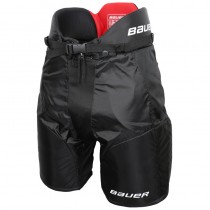 ants protect from above your knee to your waist. Important aspects of the hockey pants are that they properly protect you as well as give you ample mobility. The size of the hockey pants should be from about a third to halfway down the kneecap of your shin pad, up to the base of your shoulder pad, not overlapping but also leaving no gap unprotected. Make sure to air out your hockey pants between games and practices to keep them clean and fresh.
ants protect from above your knee to your waist. Important aspects of the hockey pants are that they properly protect you as well as give you ample mobility. The size of the hockey pants should be from about a third to halfway down the kneecap of your shin pad, up to the base of your shoulder pad, not overlapping but also leaving no gap unprotected. Make sure to air out your hockey pants between games and practices to keep them clean and fresh.
Shin p ads run up from your skate to the bottom of your hockey pants, above your knee. They are key to keeping your shins protected from errant sticks and pucks. Shin pads are easy to strap on and are also kept in place by your hockey socks. Your shin pads will get sweaty, so ensure you are airing them out with the rest of your equipment.
ads run up from your skate to the bottom of your hockey pants, above your knee. They are key to keeping your shins protected from errant sticks and pucks. Shin pads are easy to strap on and are also kept in place by your hockey socks. Your shin pads will get sweaty, so ensure you are airing them out with the rest of your equipment.
Hockey s ocks will be provided by Vancouver Thunderbirds at the beginning of the season, however, they may not be TBird colours. You will have an opportunity to purchase TBird coloured socks with the rest of the apparel options at the start of the season. Cyclone Taylor Sports would be a great place to buy another pair or two as well. To clean them, throw them in the washing machine and dryer.
ocks will be provided by Vancouver Thunderbirds at the beginning of the season, however, they may not be TBird colours. You will have an opportunity to purchase TBird coloured socks with the rest of the apparel options at the start of the season. Cyclone Taylor Sports would be a great place to buy another pair or two as well. To clean them, throw them in the washing machine and dryer.
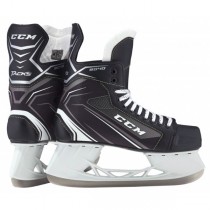 Ice skates are fundamental as they allow your child to glide across the slippery ice surface without falling over. Skates should fit snug, don’t allow more than ½“ for growth as the skates should not be too big. When tying your child’s skate laces ensure they are tight (but not too tight), so that your child’s ankles do not have room to wobble, this will help keep their skates upright.
Ice skates are fundamental as they allow your child to glide across the slippery ice surface without falling over. Skates should fit snug, don’t allow more than ½“ for growth as the skates should not be too big. When tying your child’s skate laces ensure they are tight (but not too tight), so that your child’s ankles do not have room to wobble, this will help keep their skates upright.
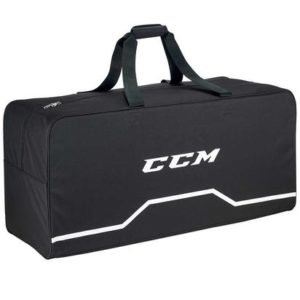 Before buying all of the equipment for your child to step on the ice, you'll need a way to transport it to the rink! Hockey bags come in all shapes and sizes, with and without wheels, with one compartment or many compartments. A hockey bag may be purchased first or second hand. Cyclone Taylor Sports carries a wide selection of hockey bags. As your child ages, you will need to make sure their hockey bag is big enough to fit all their equipment. Also ensure their hockey bag is clean and smells nice by emptying out and airing the equipment after each use, so that it has a chance to ventilate. If possible, it would be wise to find a room in the house where they can leave their equipment out to dry.
Before buying all of the equipment for your child to step on the ice, you'll need a way to transport it to the rink! Hockey bags come in all shapes and sizes, with and without wheels, with one compartment or many compartments. A hockey bag may be purchased first or second hand. Cyclone Taylor Sports carries a wide selection of hockey bags. As your child ages, you will need to make sure their hockey bag is big enough to fit all their equipment. Also ensure their hockey bag is clean and smells nice by emptying out and airing the equipment after each use, so that it has a chance to ventilate. If possible, it would be wise to find a room in the house where they can leave their equipment out to dry.
If you have any questions relating to your division or team, please contact the following:
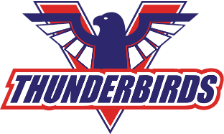

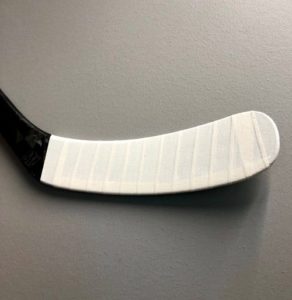

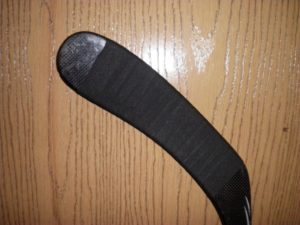


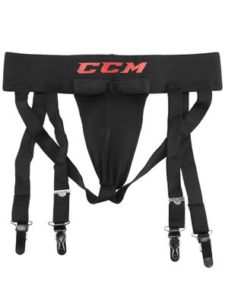 in the form of shorts with Velcro will help keep your socks up as well. If you use a classic jock, ensure you have a garter to keep your hockey socks up.
in the form of shorts with Velcro will help keep your socks up as well. If you use a classic jock, ensure you have a garter to keep your hockey socks up.